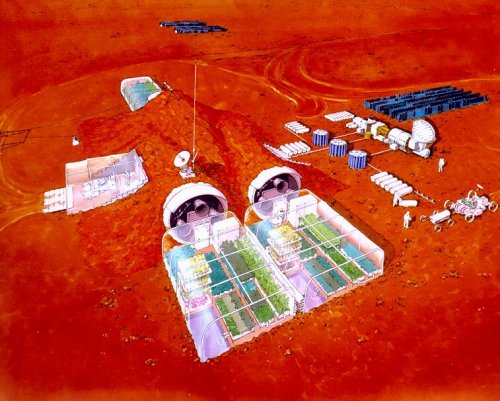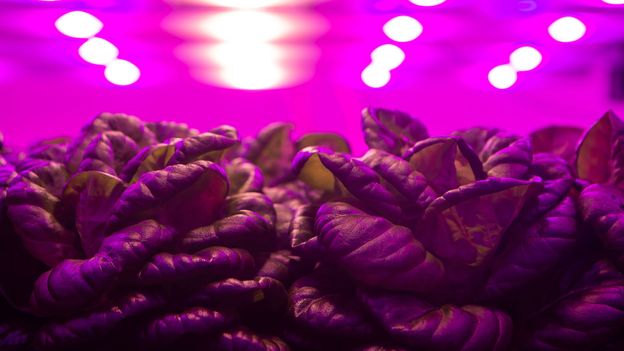My earliest insights about space farming were from a children's sf book Zvezda Kec/KEZ Star/Звезда КЭЦ by Alexander Belyayev with giant tomatoes in space  . Zubrin's The Case for Mars has some nice thoughts on it too but I would like to read more.
. Zubrin's The Case for Mars has some nice thoughts on it too but I would like to read more.
I am aware of the experiments that were conducted on Earth in Biosphere 2, soviet BIOS programs, plants and animals that wen into space etc...
Were there any studies on how the farming would look like on Moon , Mars or something like Dyson spheres? What fruit and vegetables would be best candidates for something like that? Algae? Shrimps? Powdered nutrients for 3d printed food?
I see similar trend on Earth, closed ecosystems meant to provide organic food for local urban areas, something like this:
http://inhabitat.com/urbanana-is-an-urban-renovation-concept-that-would-bring-banana-farming-to-paris/
I am aware of the experiments that were conducted on Earth in Biosphere 2, soviet BIOS programs, plants and animals that wen into space etc...
Were there any studies on how the farming would look like on Moon , Mars or something like Dyson spheres? What fruit and vegetables would be best candidates for something like that? Algae? Shrimps? Powdered nutrients for 3d printed food?
I see similar trend on Earth, closed ecosystems meant to provide organic food for local urban areas, something like this:
http://inhabitat.com/urbanana-is-an-urban-renovation-concept-that-would-bring-banana-farming-to-paris/


